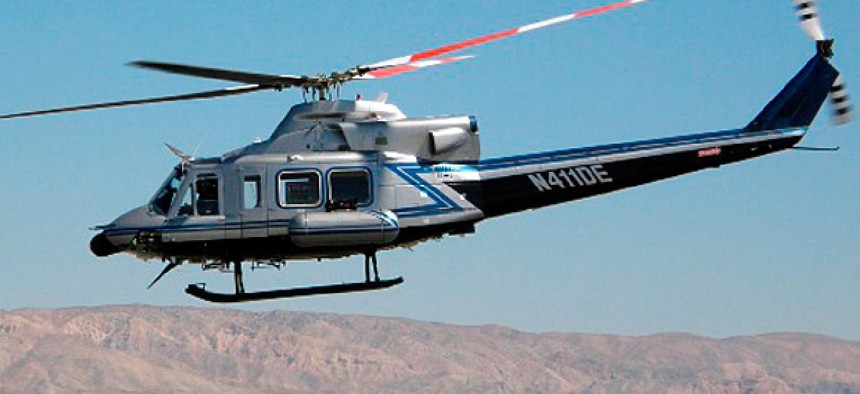NNSA helicopter now on hunt for radiation in Washington, D.C.

NNSA
The helicopter will collect data covering 70 square miles of the district.
Data collected by a helicopter flying daily over Washington, D.C., through next week could one day be key to detecting a nuclear or radiological weapon amid the clutter of harmless radioactive sources scattered through the city.
The National Nuclear Security Administration began sending the rotorcraft loaded with radiation-detection equipment over the nation’s capital on Dec. 27 and the flights continue through Jan. 11. The missions ultimately will cover 70 square miles, encompassing the entirety of the District of Columbia and possibly areas of neighboring Northern Virginia.
The agency is a semiautonomous arm of the Energy Department responsible for helping prevent, or respond to, any nuclear or radiological incidents.
A DOE-owned Bell helicopter with two pilots, a scientist and technician is making two flights per day on average, depending on the weather, the official said. Roughly 20 flights are anticipated in total.
The intent is to identify natural emitters of radiation that already exist locally in the event that authorities are forced to hunt for a nuclear weapon, radiological “dirty bomb,” or another radioactive source that is lost or stolen.
“There’s natural radiation in the environment all around us. The pavement emits radiation, and especially in D.C. there’s a lot of granite statues,” an NNSA official told Global Security Newswire. “Granite has natural radium and thorium and other radioactive isotopes. And that emits radiation.”
The individual spoke on condition of anonymity, lacking authorization to comment on the project.
“If they find something, then we can compare it to this background map and say we know that that’s a hot spot because there’s a statue here or there’s this natural feature that happens to be more radioactive than the area around it,” added the official. “It saves time in adjudicating anomalies in directed operations.”
The rotorcraft carries crystal-based technology for finding gamma radiation, which can spread hundreds of feet into the atmosphere.
“It goes back and forth, kind of like mowing the lawn at 150 feet in the air,” the official said of the specially outfitted helicopter.
Analysis of the findings by the NNSA Remote Sensing Laboratory at Joint Base Andrews in Maryland should be completed shortly after the flight program finishes, the source added.
The project is being conducted at the request of local law enforcement, but the official did not know the specific agency.
The Energy Department has conducted hundreds of aerial searches since the 1960s for environmental remediation projects and background radiation checks.
Selected areas of Washington and surrounding jurisdictions in Virginia were previously scanned about five years ago by the nuclear agency. It has conducted corresponding flight operations in New York City, Baltimore and the Bay Area of California, usually at the request of the municipalities, the official said.
The agency has also trained police in cities including Chicago to use their own systems for the same end. Digital maps highlighting natural radioactive hot spots are then produced by NNSA specialists.
In all cases, maps of the findings are submitted to the covered jurisdictions, the agency said.
NEXT STORY: What tech employees want





